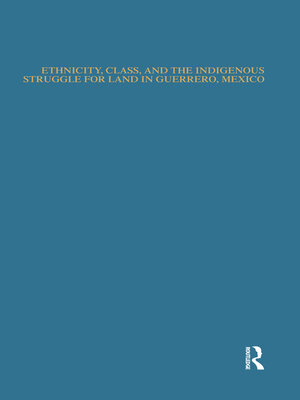Ethnicity, Class, and the Indigenous Struggle for Land in Guerrero, Mexico
ebook ∣ Native Americans: Interdisciplinary Perspectives
By Norberto Valdez

Sign up to save your library
With an OverDrive account, you can save your favorite libraries for at-a-glance information about availability. Find out more about OverDrive accounts.
Find this title in Libby, the library reading app by OverDrive.



Search for a digital library with this title
Title found at these libraries:
| Library Name | Distance |
|---|---|
| Loading... |
This study focuses on Amuzgo Indian communities of the Costa Chica of Guerrero state in Mexico in order to analyze the indigenous struggle for land and its relationship to ethnic identity and culture. Primary archival data and field research reveal a historical profile of this multi-ethnic region with a long and fascinating history of resistance to non-Indian control of communal lands and labor. The dynamics of 19th century liberal economic reforms, privatization of Indian lands, militarization, interventions of foreign capital, class conflicts, and impoverishment are reflected in contemporary processes in the Costa Chica. The image of the resilient peasant, or campesino , masks negative aspects of peasant status in the class structure, including poverty and superexploitation of family labor, and the intra and inter-familial conflicts that are a significant aspect of daily life. Case studies of land conflicts explore these class issues, as well as the relationship between gender inequalities and insecurities of land tenure. Indian communal lands (ejidos ) are more than an economic means of agricultural production; such lands are also the basis of cultural reproduction and provide a framework in which political resistance can emerge. Bibliography. Index







